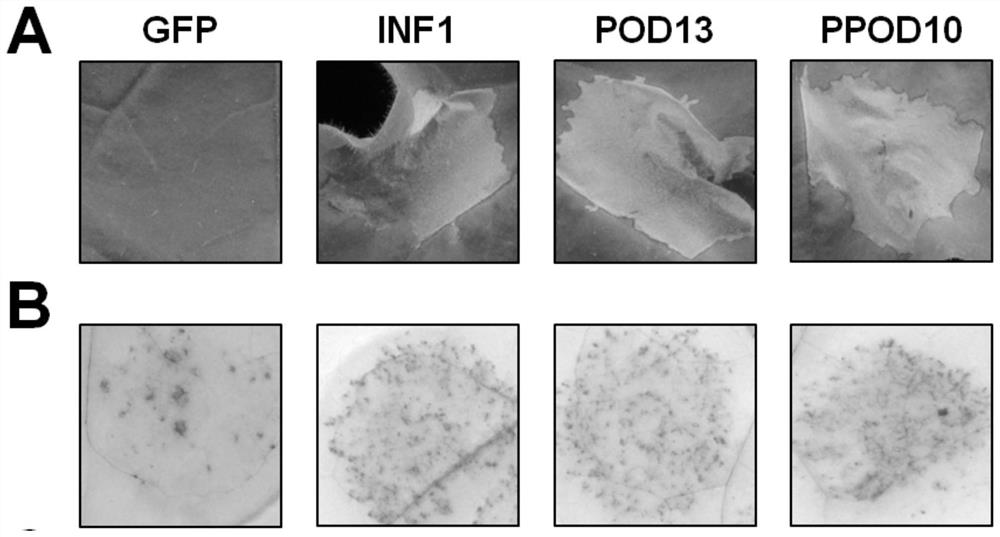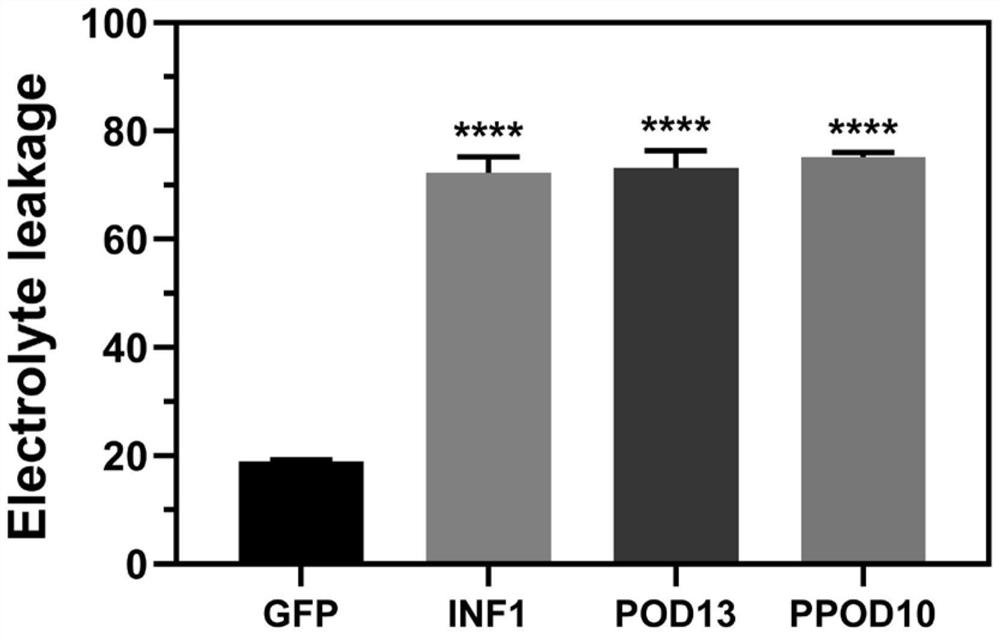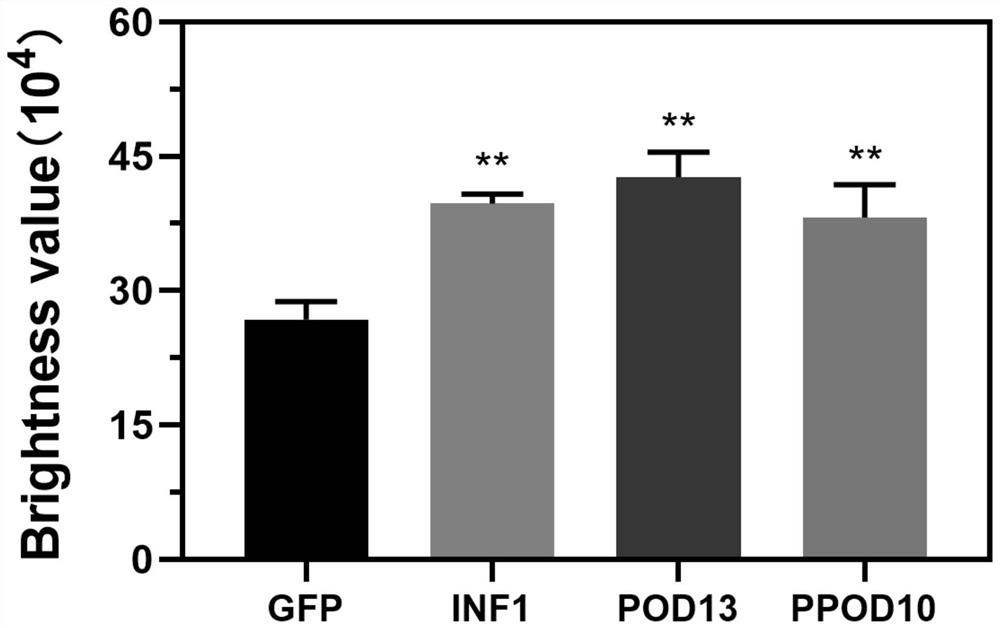Elicitin gene for inducing accumulation of HR and active oxygen in preservative mould and expression vector and application thereof
An expression vector, gene-like technology, applied in the field of genetic engineering, can solve the problem of undeveloped immune-induced resistance protein, etc., and achieve the effect of stimulating plant immunity and promoting the accumulation of reactive oxygen species
- Summary
- Abstract
- Description
- Claims
- Application Information
AI Technical Summary
Problems solved by technology
Method used
Image
Examples
Embodiment 1
[0023] Example 1 Amplification and sequencing of 2 Elicitin-like genes
[0024] 1. Experimental strains
[0025] The tested strain Pythium oligandrum 1 and Pythium periplocum 2 The strains were preserved in the Plant-Phytophthora Interaction Laboratory of the Department of Plant Diseases of Nanjing Agricultural University in 10% V8 solid medium at a temperature of 10°C.
[0026] 2. Preparation of Nicotiana benthamiana seedlings for testing
[0027] Nicotiana benthamiana were sown in plastic pots (d=10cm) filled with vermiculite (2-4mm), and placed in a greenhouse with 14h light (strong light irradiation) / 10h darkness for growth. Let it grow for 7 days, and after two true leaves grow, transplant it to vermiculite black soil and culture soil with a volume ratio of 5:1 for 30 days, and take the same 3, 4, 5 leaves for use Express the experimental gene, and then continue to observe whether there is obvious HR in the leaf phenotype for 7 days.
[0028] 3. Extract the RNA of Py...
Embodiment 2
[0035] Example 2 Construction of PBIN-PLUS: POD13 and PBIN-PLUS: PPOD10 expression vectors
[0036] The PBIN-PLUS (BIOVECTOR China Plasmid Vector Strain Cell Line Gene Collection Center) empty vector plasmid was digested with SmaI. The cDNA and the vector were ligated using Novizyme's homologous recombinase.
[0037] The reaction system is as follows: 2 μL of 10×CEⅡ reaction buffer; 2 μL of the recovered product of the above PCR; 2 μL of the empty vector after digestion by the above enzyme; 1 μL of homologous recombination enzyme; sterile water to make up to 10 μL.
[0038] The reaction procedure is: react at 37° C. for 30 min. The ligation product was transformed into Escherichia coli DH5α, and the transformants were screened on the Kan resistance medium, and positive clones were picked to extract plasmids for colony PCR identification. The identified positive clones were sequenced, and the PBIN-PLUS:POD13 and PBIN-PLUS:PPOD10 expression vectors were obtained correctly.
Embodiment 3
[0039] Example 3 Transformation of expression vectors into Agrobacterium and functional verification
[0040] 1. Obtain Agrobacterium Competent Cells
[0041] Streak culture Agrobacterium GV3101 strain on LB solid medium plate, and culture it upside down for 18-20 hours at 28°C; place a single colony in LB liquid medium (containing 100 mg / L Rif), and culture it with shaking at 28°C for 18-20 hours 20h; 100 times the volume of antibiotic-free bacterial liquid was added to the bacterial liquid, and the OD600 was shaken to 0.3-0.5 at 28°C; after cooling on ice, centrifuge at 4000r / min for 5min at 4°C, discard the supernatant; add 20mmol / L CaCl2 solution to suspend the precipitate, centrifuge at 4000r / min for 5min at 4°C, discard the supernatant; add 20mmol / L CaCl2 solution to suspend the bacterial cell pellet again for later use.
[0042] 2. Transformation of Agrobacterium with PBIN-PLUS:POD13 and PBIN-PLUS:PPOD10 expression vectors
[0043] The PBIN-PLUS:POD13 and PBIN-PLUS:P...
PUM
 Login to View More
Login to View More Abstract
Description
Claims
Application Information
 Login to View More
Login to View More - R&D
- Intellectual Property
- Life Sciences
- Materials
- Tech Scout
- Unparalleled Data Quality
- Higher Quality Content
- 60% Fewer Hallucinations
Browse by: Latest US Patents, China's latest patents, Technical Efficacy Thesaurus, Application Domain, Technology Topic, Popular Technical Reports.
© 2025 PatSnap. All rights reserved.Legal|Privacy policy|Modern Slavery Act Transparency Statement|Sitemap|About US| Contact US: help@patsnap.com



